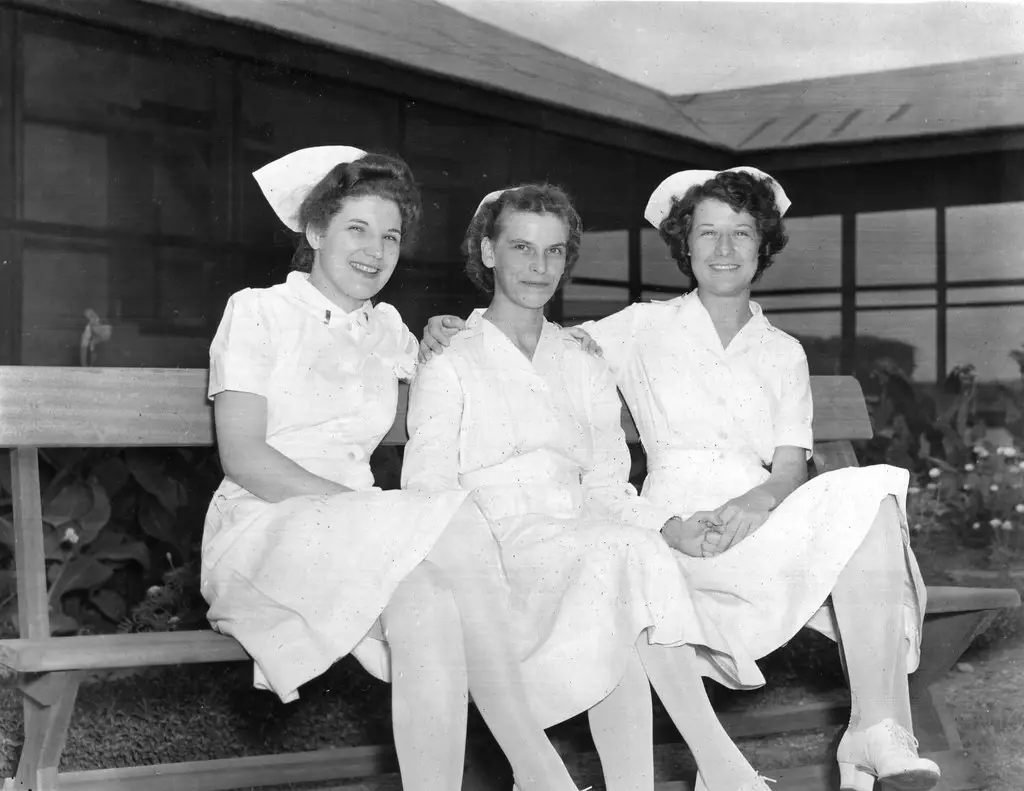Why Do Nurses Wear Compression Socks

Compression socks are becoming increasingly popular among nurses. They are a comfortable and practical way to provide relief from a variety of foot and leg conditions, including swelling, fatigue, pain, and varicose veins. Compression socks can help nurses prevent and manage more serious medical issues such as deep vein thrombosis (DVT). They provide support to the feet, ankles, and calves by increasing blood flow and circulation. Additionally, they help reduce muscle fatigue by providing extra cushioning for long shifts on your feet. Compression socks come in a variety of styles and colors that are designed to be both fashionable and functional.
How to Choose the Right Compression Sock for Nurses
Compression socks are an essential item for any nurse, as they provide necessary support and help to prevent some of the common ailments associated with long shifts on feet. Choosing the right compression sock can be a difficult task, however, as there are many different types available. Here are some tips to help nurses find the perfect pair of compression socks that will provide comfort and support.
First, it is important to consider the amount of compression needed. Compression socks come in a range of levels, from light to extra-firm support. Nurses should select a level that provides enough compression to ensure comfort and support without being too tight or uncomfortable.
It is also important to consider the material used in the compression sock. Natural fibers like cotton or wool are best for breathability and comfort, while synthetic materials like nylon or spandex offer more durability and moisture-wicking capabilities. Some manufacturers even offer specialized materials that are specifically designed for nursing applications.
Finally, it is important to find a pair of compression socks that fit properly. Sizing can vary between brands and models, so nurses should measure their calves before making a purchase. It is also important to consider the height of the sock – some styles may be too long or too short depending on personal preference.
Types of Compression Socks for Nurses
Nurses are often on their feet working long shifts, which makes them prone to swelling and aching in the legs. Compression socks are specially designed to provide relief from such conditions by providing graduated pressure that helps reduce swelling and improve circulation. There are several types of compression socks available for nurses, each offering different levels of support and varying styles.
Graduated compression stockings are the most common type of compression sock used by nurses. These socks provide a higher level of pressure at the ankle and gradually decrease up the leg, helping to push blood back up towards the heart. This type of sock is ideal for those suffering from chronic venous insufficiency or varicose veins, as it helps to reduce discomfort and swelling in the legs.
Compression stockings with open toe designs are also available for nurses who need additional support but prefer a more breathable style. These open toe styles often feature padded heel cups or arch supports that provide extra cushioning and support while still allowing air to circulate around the foot. They are best suited for those who spend long hours on their feet or suffer from conditions such as plantar fasciitis, Achilles tendonitis or shin splints.
Compression socks with adjustable bands are another popular choice among nurses as they offer a customizable level of pressure throughout the day. The adjustable bands can be tightened or loosened depending on how much support is needed, ensuring maximum comfort during long shifts on your feet. These compression socks also help to reduce fatigue and improve circulation in the legs, making them an ideal choice for nurses who stand all day at work.
Finally, some compression stockings feature antimicrobial materials that help keep feet dry and odor-free throughout the day. These specialized materials also help prevent blisters and other skin irritations caused by moisture buildup in traditional cotton socks. For those prone to fungal infections such as athlete’s foot, these antimicrobial compression stockings can be an invaluable asset during long shifts on your feet.
No matter what type of compression sock you choose, it’s important to find one that fits correctly and offers enough support without being too tight or restrictive around your calves or ankles. Compression stockings can be an invaluable asset for nurses who spend long hours on their feet each day, providing relief from fatigue and reducing swelling in the lower legs while still allowing you to look professional at work.
How to Wear Compression Socks Correctly
Compression socks are designed to increase blood flow in the lower legs and help to reduce swelling and discomfort. Wearing them correctly is important for achieving the desired benefits. It is important to understand the proper way to put on compression socks. Here are some simple steps for wearing them correctly:
Start by standing up and straightening your leg. This will make it easier to slip the sock onto your foot. When you have the sock in place, slowly pull it up your leg, using your hands as much as you need to get it into place. Make sure that there are no wrinkles in the fabric, and that it is not bunched up around your ankle or knee. Stop at mid-calf level, where the sock should fit snugly but comfortably without being too tight or restrictive.
Next, adjust the top of the sock so that it fits snugly against your skin without feeling too tight or restrictive. The top should be just below the knee cap, with no wrinkles or bunching of fabric around this area. Once you have adjusted the fit of the sock, you can then move on to adjusting its length and width for a more comfortable fit. If necessary, use safety pins or clips to keep it in place while you adjust it for a better fit.
Finally, once you have adjusted the length and width of your compression sock, make sure that there are no wrinkles in the fabric and that it fits comfortably against your skin without feeling too tight or restrictive. If necessary, use safety pins or clips to help keep it in place while you wear it throughout the day. With proper care and maintenance, compression socks can provide long-lasting relief from discomfort and swelling in lower legs.

Common Issues with Wearing Compression Socks
Compression socks are popular for their ability to provide relief from many common ailments such as varicose veins, swelling, and fatigue. However, wearing them can also come with some common issues. It can be difficult to find the right fit and some people may experience skin irritation or rashes. Additionally, if they are not worn correctly or not taken off at night, they can become too tight and cause discomfort. Finally, improper care of the socks can cause them to lose their elasticity and become ineffective.
Finding the right size and fit is important when it comes to compression socks. Most come in various sizes that should be chosen according to your calf or foot circumference. If the socks are too tight, they will restrict blood flow and cause discomfort while if they are too loose, they won’t provide the necessary compression and may slip down during activity. It is also important to note that different manufacturers have different sizing guidelines so you should always consult their instructions before purchasing a pair of compression socks.
Skin irritations or rashes can occur when wearing compression socks due to moisture buildup or friction against the skin caused by rubbing against clothing or ill-fitting socks. To avoid this issue, make sure your socks fit properly and opt for breathable materials such as cotton that will allow air circulation around your skin. Additionally, be sure to wash your compression socks regularly and apply talcum powder before putting them on in order to reduce friction against your skin.
Finally, it is important not to wear your compression socks for too long as this can lead to discomfort due to increased tightness over time. Typically you should take them off after 8-10 hours of wear in order to give your skin a break from the pressure of the sock material. Additionally, it is important not to dry clean or put your compression socks in hot water as this will break down the elasticity of the fabric which will make them ineffective at providing support.
Do All Nurses Wear Compression Socks?
Nurses often have to work long shifts and are on their feet the whole time. To help them stay comfortable and protect their feet, many nurses wear compression socks. Compression socks provide additional support for the legs and feet, helping to reduce swelling and fatigue that can be caused by long hours of standing or walking. They also help to improve circulation, which is essential when working in a medical setting. While not all nurses wear compression socks, many find them beneficial and choose to wear them while on shift.
Compression socks are usually made from a stretchy material like spandex or nylon with graduated compression levels throughout the sock. This means that they are tighter at the ankle and gradually become looser as you move up the leg. Some styles also have additional features like arch support, cushioning, or moisture-wicking fabric to provide extra comfort and protection.
When choosing a pair of compression socks, it is important to make sure they fit properly. They should be snug around your ankles without being too tight or digging into your skin. It is also important to choose a pair that has graduated compression levels that are appropriate for your needs. If you are unsure which level of compression is best for you, consult with your doctor or nurse practitioner before purchasing a pair of socks.
In conclusion, not all nurses wear compression socks but many find them beneficial and choose to do so while on shift. They provide extra support for the legs and feet while helping to reduce fatigue caused by long hours of standing or walking. When selecting a pair of socks, make sure they fit properly and have an appropriate level of compression for your needs.
When Should Nurses Not Wear Compression Socks?
Nurses should not wear compression socks when they have any kind of skin irritation, infection, or open wound at the area where the socks would be worn. Compression socks can also be dangerous for those with poor circulation, such as diabetics or those with peripheral arterial disease. In these cases, wearing compression socks could increase the risk of skin breakdown and subsequent infection. Additionally, if a nurse has severe edema or swelling that is already affecting their legs, they should not wear compression socks as this could worsen the condition. Finally, pregnant nurses should avoid wearing compression socks unless they are prescribed by their doctor for a specific medical reason.
It is always important to consult with a doctor before wearing any type of compression sock to ensure that there are no potential risks involved in doing so. They can help to determine if wearing compression socks is an appropriate solution and provide guidance on how to properly fit and wear them safely.

Conclusion
Compression socks are a beneficial and necessary garment for nurses. They provide nurses with comfort, support and improved circulation in their legs throughout the long shifts they work. Compression socks help reduce leg fatigue, swelling and cramping, as well as improving blood flow which can reduce the risk of blood clots. Nurses can also benefit from compression socks as they provide a degree of protection and warmth from daily exposure to cold surfaces such as hospital floors. Overall, compression socks provide an essential level of comfort and support to nurses that helps them perform their job to the best of their ability.
Therefore, it is clear why nurses choose to wear compression socks during their shifts; not only do they provide comfort but they also help protect the nurse from potential health issues related to prolonged standing and working in cold environments. By wearing compression socks, nurses are investing in their health and wellbeing, ensuring that they can perform their duties without risk of injury or illness.
